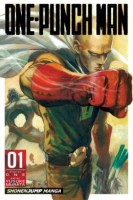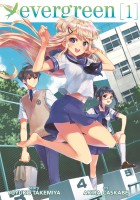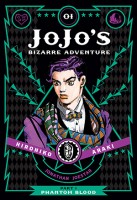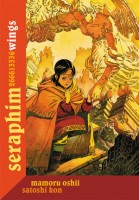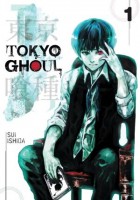The last two years have been kind to Satoshi Kon fans: Dark Horse and Vertical Comics have each released two volumes of Kon’s manga, from Tropic of the Sea, a supernatural mystery, to Seraphim 266613336 Wings, an unfinished collaboration with Ghost in the Shell director Mamoru Oshii. This week, I investigate Dream Fossil, which collects all of Kon’s published short stories into a single volume.
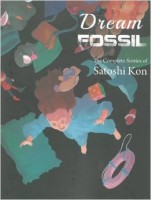 Dream Fossil: The Complete Stories of Satoshi Kon
Dream Fossil: The Complete Stories of Satoshi Kon
By Satoshi Kon
No rating
Vertical Comics, $24.95
Dream Fossil is a window into a crucial stage in Satoshi Kon’s development: the six-year period between the publication of his first short story (1984) and his first long-form manga (1990). Readers may be astonished by Kon’s undisguised homage to Katsuhiro Otomo, and the flaws in his storytelling technique. Yet Dream Fossil is not simply a collection of juvenilia; these stories represent Kon’s first meaningful attempt to grapple with the themes that define his mature work, from Perfect Blue and Tokyo Godfathers to Paranoia Agent and Paprika.
Consider “Carve” and “Toriko,” two of Kon’s earliest works. Both take place in dystopian societies that stress conformity and obedience over individualism and free will–an ideal set-up for exploring the boundaries between reality and illusion. Though Kon delineates these boundaries more baldly in “Carve” and “Toriko” than in his later films, all of Kon’s characters exist in a false state of consciousness; only shattering acts of violence force them to question what they think is real. These early stories also suggest Otomo’s strong influence on Kon; “Carve,” in particular, feels like a compressed retelling of Akira, as both feature a young male protagonist whose extrasensory powers turn him into God-like being.
“Beyond the Sun” and “Joyful Bell” are another instructive pairing. Both stories evoke the humanist spirit of Tokyo Godfathers in their fond, funny depictions of two city-dwellers who temporarily escape the confines of their daily routines. As in Tokyo Godfathers, the urban landscape proves an essential component of both stories; Kon treats the city as a playground where adults can shed the burdens of age, failure, and loneliness to recover their optimism and youthful wonder.
Other stories work well on their own terms. “Guests,” a cautionary tale about real estate, skillfully blends humor and horror, while “Picnic,” one of Dream Fossil‘s briefest selections, depicts the sepulchral beauty of an underwater city. At the other end of the spectrum are Kon’s coming-of-age stories “Horseplay,” “Summer of Anxiety,” and “Day Has Dawned,” all of which suffer from tonal schizophrenia, see-sawing between wacky hijinks and meaningful lessons about adulthood. This combination might have worked in a longer format, but Kon’s characters are so underdeveloped that they never register as distinct individuals who are motivated by their own beliefs, fears, and desires.
If pressed to say whether I “liked” Dream Fossil, I’d be reluctant to give a simple yes-or-no answer. It’s difficult to overlook the rubbery faces and clumsy internal transitions in the volume’s weakest stories, or Kon’s flagrant efforts to cop Otomo’s style. Yet many of the stories feature the kind of arresting sequences, amusing plot twists, and flashes of genuine imagination that are hallmarks of Kon’s best films, making it difficult to dismiss this uneven body of work as “good,” “bad,” or “okay.”
Reviews: Jason Thompson makes a strong case that Kekkaishi is the best shonen manga you haven’t read. At Anime UK News, Sarah reviews Servamp, a supernatural adventure about–what else?–vampires. Closer to home, TCJ columnist Joe McCulloch sings the praises of Professor Layton, an untranslated manga in which “a top-hatted archeologist and his adolescent weed carrier solve extremely unlikely and sentimental mysteries” by means of word games, puzzles, and riddles.
Ash Brown on vol. 4 of After School Nightmare (Experiments in Manga)
Matthew Warner on vol. 2 of Akame ga KILL! (The Fandom Post)
Connie on vol. 1 of Alice in the Country of Clover: Knight’s Knowledge (Slightly Biased Manga)
Alice Vernon on The Angel of Elhamburg (Girls Like Comics)
Connie on vol. 17 of Black Bird (Slightly Biased Manga)
Connie on vol. 5 of Crimson Spell (Slightly Biased Manga)
Leroy Douresseaux on vol. 10 of Dogs: Bullets and Carnage (Comic Book Bin)
Helen and Justin on Donyatsu (Organization Anti-Social Geniuses)
Connie on vol. 1 of Earthian (Slighty Biased Manga)
Kory Cerjak on vol. 44 of Fairy Tale (The Fandom Post)
Frank Inglese on vols. 1-2 of Food Wars! Shokugeki No Soma (Snap 30)
Rich Johnston on Fragments of Horror (Bleeding Cool)
Kate O’Neil on vol. 6 of Gangsta (The Fandom Post)
Connie on vol. 11 of Inuyasha: VIZBIG Edition (Slightly Biased Manga)
L.B. Bryant on vol. 1 of Is It Wrong to Try to Pick Up Girls in a Dungeon? (ICv2)
Luke Halliday on vol. 1 of JoJo’s Bizarre Adventure: Phantom Blood (Snap 30)
Tony Yao on Kiss Him, Not Me (Manga Therapy)
Seth Hahne on Last Man, Vol. 2: The Royal Cup (Good Ok Bad)
Kane Bugeja on The Legend of Zelda: A Link to the Past (Snap 30)
Kathryn Hemmann on The Legend of Zelda: A Link to the Past (Contemporary Japanese Literature)
Connie on vol. 9 of Maoh: Juvenile Remix (Slightly Biased Manga)
Leroy Douresseaux on vol. 3 of Master Keaton (Comic Book Bin)
Robert Frazer on vol. 2 of My Neighbor Seki (UK Anime Network)
Dan Barnett on vols. 1-4 of Neon Genesis Evangelion (UK Anime Network)
Connie on Nonnonba (Slightly Biased Manga)
Erica Friedman on Seijun Shoujo Paradigm (Okazu)
Connie on vol. 18 of Sensual Phrase (Slightly Biased Manga)
Megan R. on Strawberry 100% (The Manga Test Drive)
Andy Hanley on vol. 1 of Sword Art Online Girls’ Ops (UK Anime Network)
Sakura Eries on vol. 2 of Sword Art Online Progressive (The Fandom Post)
Joceyln Allen on vol. 2 of USCA (Brain vs. Book)
Lori Henderson on vols. 1-5 of W Juliet (Manga Xanadu)
Erica Freidman on vol. 6 of Wandering Son (Okazu)
Sean Gaffney on vol. 8 of Wandering Son (A Case Suitable for Treatment)
Connie on vol. 15 of We Were There (Slightly Biased Manga)
Robert Frazer on vols. 5-6 of Wolfsmund (UK Anime Network)
Ken H. on vols. 1-2 of Yamada-Kun and the Seven Witches (Sequential Ink)
Connie on vol. 1 of Yukarism (Slightly Biased Manga)
